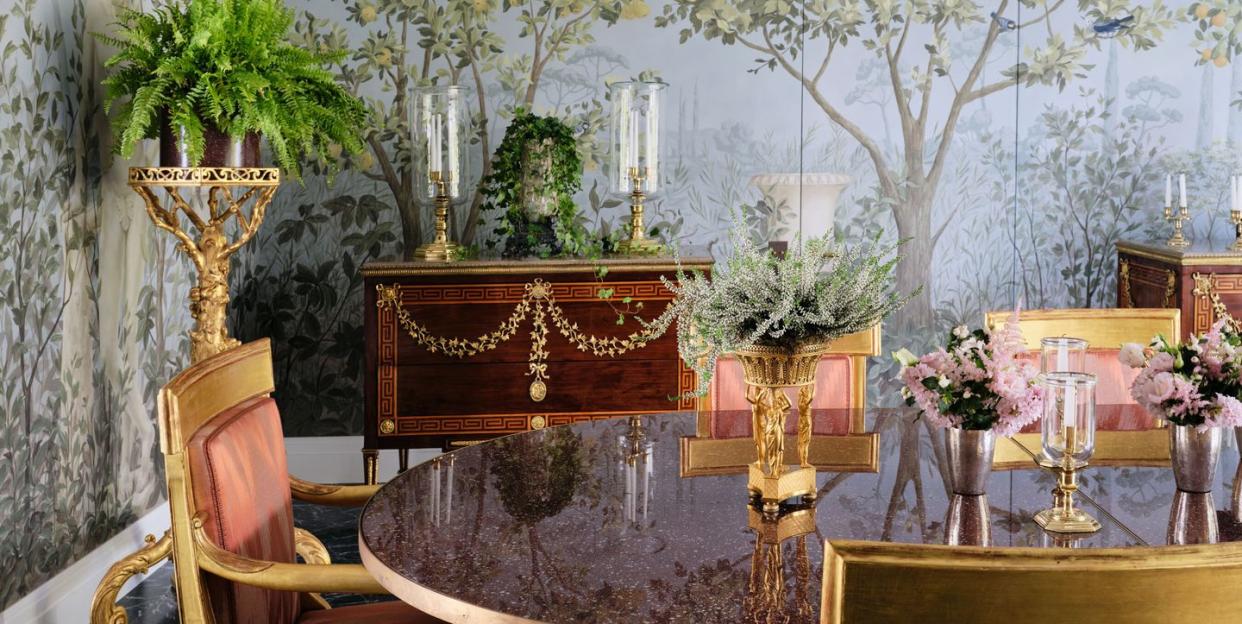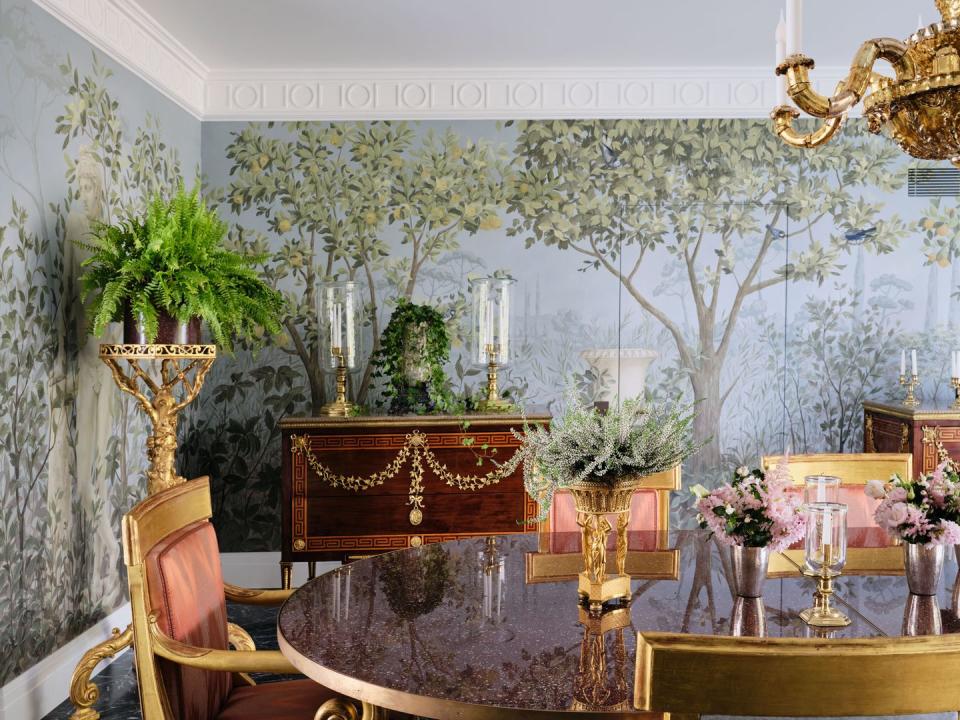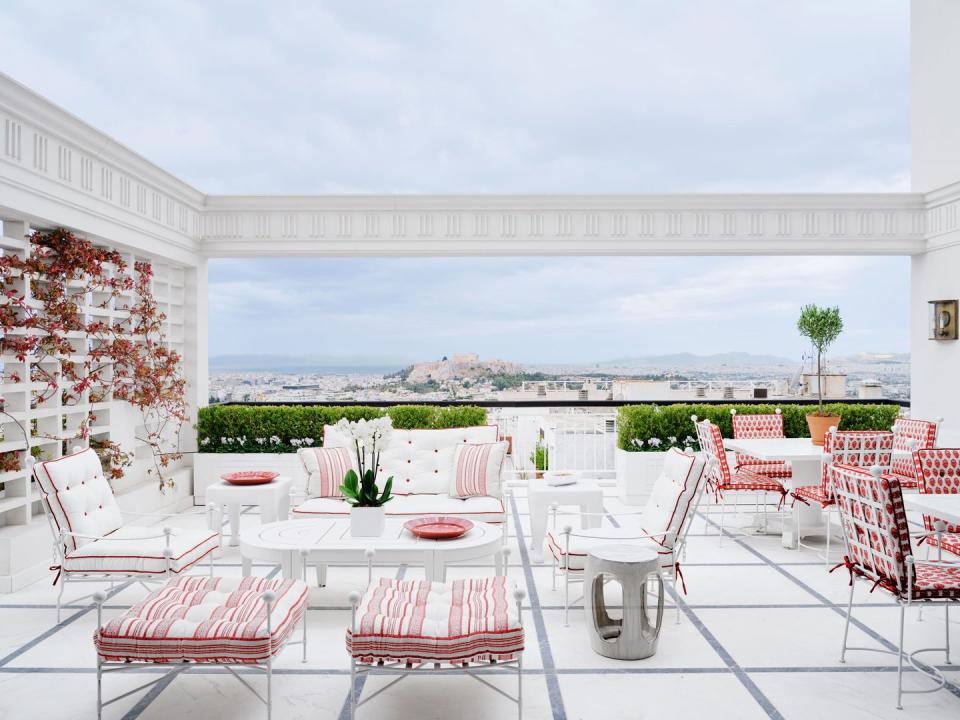Alex Papachristidis Gives a Lesson in the Classics at an Athens Apartment Overlooking the Parthenon

http://alexpapachristidis.com/The past is present in any apartment with a view of the Parthenon in Athens. But the 5th-century BC marble marvel of a temple to the goddess Athena looms particularly large beyond the terraces of the triplex Alex Papachristidis decorated for a Greek and American couple. “Everything is this,” Papachristidis says. “It is about the view and the windows.”
But don’t for a minute let his words make you think every single detail inside the home has not been considered, layered, perfected, and created in conversation with the history outside its walls. Look, for example, at the marble pilasters in the entry. Note the “very Greek” white walls. “There is no carpeting in the living and dining rooms. There are no curtains in the living room. The walls are plaster and a bit chalky with white paint. It’s almost temple-like,” Papachristidis says. Again, there is that view.

Anyone familiar with Papachristidis’s work, or even his Instagram account, might wonder if he has undergone a decorating brain transplant. Don’t. In his New York office a mood board for one of the apartment’s sitting rooms reveals his true self: fabrics of varying textures and periods, trims and finishes, embroideries, silk velvets, and the leopard print. (There is always the leopard print.) “I am drawn to these elements,” he says, “the richness, the layering, and the comfort. You learn from the greats. I love—and constantly study—the history of the decorative arts.”
With the Athens project he had numerous historical elements with which to contend. There remain in the capital city some examples of the neoclassical buildings designed in the 19th century after the end of the Ottoman period and during the reign of King Otto. (The Academy of Athens; the Zappeion, next to the National Gardens; the mansion that houses the Museum of Cycladic Art; and Heinrich Schliemann’s home, now the Numismatic Museum, are all worth visits.) This apartment building, in a neighborhood in central Athens, is not among them. Papachristidis could bring the rich adornment and high level of craftsmanship and materials present in Athens neoclassicism—a trademark of his work—into the apartment, but the symmetry and order of the architecture presented more of a challenge. “I had to control myself,” he says. “I have to keep it all relevant. I don’t believe in changing a space into what it is not. We played as much as we could.”
He used color to reframe perspective and columns to establish geometry. He points to the library, where a wall of windows once had the room entirely off balance. He designed a series of movable oak screens to restore it. Throughout the project, he used classical, timeless architecture as his guide. “If it’s classical,” he says, “people understand it. They never tire of classic. And that is a concept of value you give to your clients.”
Villa Kerylos—the homage to ancient Greek civilization in Beaulieu-sur-Mer, France, built for archaeologist Theodore Reinach by architect Emmanuel Pontremoli in 1902—was a dominant inspiration. “It is so beautifully done,” says Papachristidis of the structure, now a museum open to visitors by appointment. But as with any starting point, one must adjust influences to the task at hand. “I had to also keep coziness in mind here. Villa Kerylos is perfect, but is there a comfortable sofa? No. I like upholstery—I don’t mean an average sofa. There is embroidery, there is silk velvet.” Back to Villa Kerylos. “It is so beautifully finished.”
The word “finished” comes up often in conversation with the decorator. Papachristidis believes in delivering a project completely “finished.” Even the pens on a client’s desk are chosen by him. “I don’t want my clients to ever touch something that isn’t pretty.” He also wants them to always have the freedom to say yes. “I make sure to find the prettiest folding chairs in case we need them to add more guests to a table.” This was important to these clients in particular, a strong family who expect to spend a lot of quality time with friends and relatives.
And when the patriarch saw Papachristidis’s transformation of the space? In a response that is perhaps more Laconian than Athenian—but from a certain kind of Greek man is the very highest praise—he delivered this verdict: “I’m surprised. I like it more than I thought I would.”

This story appears in the April 2022 issue of Town & Country. SUBSCRIBE NOW
You Might Also Like

